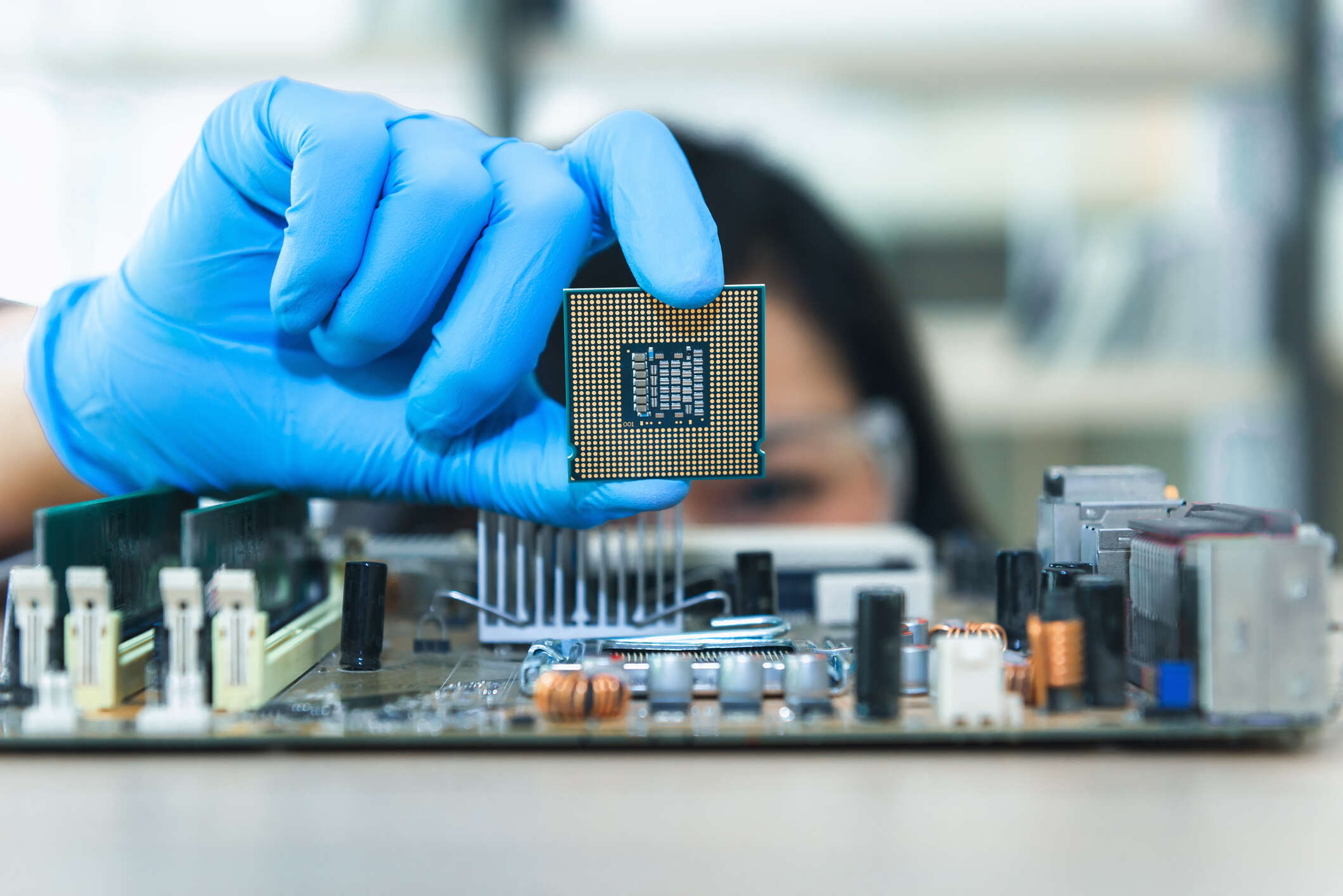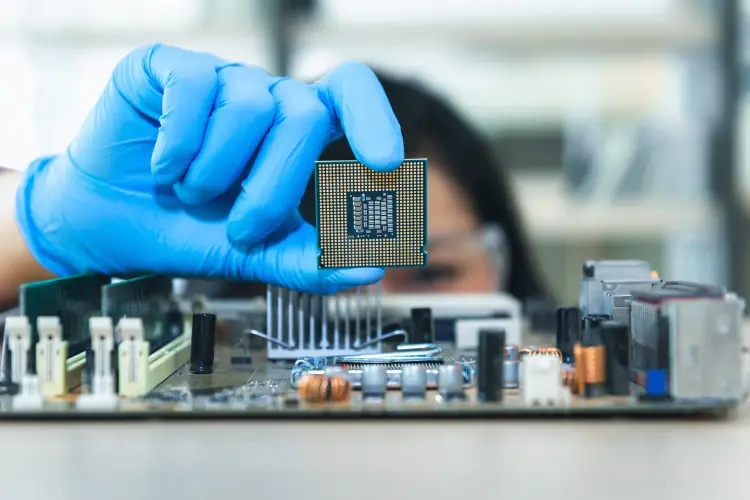
The global chip shortage continues to wreak havoc around the world, and no easy solution is in sight for those awaiting vital components or equipment. Tech leaders have had to take a flexible approach to the crisis, and for many working in IT, the big changes and rapid digital transformation of the Covid-19 pandemic have stood them in good stead. With a shortage of key equipment set to continue for some months, strong relationships with vendors will be key for IT teams.

Few industries have been immune to the effects of the chip shortages, which have now endured for more than a year. Automakers have been hit particularly hard, and on Monday Nissan CEO Makoto Uchida said there was “no end in sight” to the problem, meaning he could not accurately predict when the company would resume its normal production and delivery schedule for new cars. The company had to close a plant in the US for two weeks this summer, citing the chip shortage as the reason, and Uchida told the BBC: “We have a semiconductor shortage as an industry and how we recover from that is critical.”
Elsewhere the chip shortage has also been blamed for the fall in the number of sales on Black Friday, with Adobe Analytics reporting the pre-Christmas online sale generated $8.9bn this year compared to $9bn in 2020. A lack of stock is thought to be one of the drivers of lower than expected sales, with the chip shortage causing many electronic items to be unavailable for the event. For IT departments, the Black Friday woes of retailers are a familiar story.
The chip shortage and IT: how has the industry been impacted?
The start of the Covid-19 pandemic was the initial catalyst for the chip shortage, with businesses and consumers rushing to purchase laptops and other electronics to kit out their homes for remote working and schooling. Other factors, such as the impact of climate change and the blockage of the Suez Canal, have also played a role in the crisis and led to PC chips being the most in-demand component for semiconductor producers in 2020.
While some components are now more easily available than earlier in 2021, others remain scarce. "The semiconductor industry is massive and diverse," says Alan Priestley, vice president analyst at Gartner. "So although some parts of the industry are doing better, other parts aren't, and the end effect from a purchasing perspective is the same: so the microprocessor part of the business is doing okay at the moment, but the power control part isn't, and you can't make PCs or laptops without power components."
The microprocessor part of the business is doing okay at the moment, but the power control part isn't, and you can't make PCs or laptops without power components.
Alan Priestley, Gartner
For some IT departments, this has translated into some difficulty getting hold of the technology they need to operate their data centres, says Mike Orme, who covers the semiconductor market for GlobalData. ''Data centres haven't been markedly hit by a shortage of core CPUs and GPUs that the chip makers give high priority to as they're by far their profitable product lines," Orme explains. "But there's more to a data centre than CPUs and GPU AI chips, and here they continue to be hit by lengthening lead times, for network switch chips for instance, of up to 52 weeks."
Orme also cites power chips and other low-cost items such as resistors as particular problems for IT buyers. "They cost a few cents a time but can be almost impossible to get hold of," he says.
The shortage has also coincided with a spike in memory prices. "Memory pricing was going up anyway, even if this hadn't happened," says Priestley. "We're at the point of the cycle where prices rise, but that impacts IT organisations because they might have to rethink how much memory they deploy, or budget more if they've got to have that amount of memory inside their systems."
A CIO from a construction company told Tech Monitor that they have experienced slightly longer lead times, slightly higher prices and a lack of availability of higher-end graphics equipment. But they said the shortages have not caused major problems for their organisation. "It certainly hasn't disrupted my civil engineering contracting business," they said. "We've even been able to invest in new heavy plant and expensive surveying equipment without too much hassle."
How have tech leaders responded to the chip shortage?
For other tech leaders, the chip shortage has meant making some adjustments to the way they work. "We've seen a lot of people extending the life cycles of their products," says Priestley. "So whereas a corporate PC might have previously been on a three-year life cycle, now that's being extended to five years." Indeed, the PC market grew just 1% in Q3 2021, compared to 3.6% in the same period last last year, suggesting hardware is being used for longer.
The shortage of equipment for data centres has exacerbated the trend for tech teams to move services to the cloud, GlobalData's Orme says. "One option some enterprises are resorting to is the public cloud as an alternative to struggling to build or extend their own custom data farms within a feasible time frame," he says.
Priestley adds that the public cloud has also been seen as a solution to rising memory prices. "Some companies have mitigated the [memory] issue by saying, 'we won't deploy, we'll use' and have landed their workloads in the cloud instead," he says. "That just moves the problem to the cloud providers, but they have enough size and negotiating power to mitigate the demand issues; where a typical IT organisation might buy 100 servers a year, [the cloud providers] are buying hundreds of thousands."
Indeed, the leading cloud providers – Amazon's AWS, Microsoft Azure and Google Cloud – have avoided the worst effects of the shortages though, as reported by Tech Monitor, the trio are all developing their own in-house silicon in a bid to reduce their reliance on third parties.
Some digital transformation projects are also being rethought, partly as a result of the chip shortage, but also in light of the bigger changes being brought about by the Covid-19 pandemic, Priestley says. "IT departments slowed down last year because they didn't have the human resources available with everyone working from home," he says. "It's not clear what's going to happen in 2022 as the pressure comes off products, but businesses may well be rethinking their digital transformation plans, because of the shortages but also because of the changing environment we're in at the moment."
Priestley adds that IT departments have avoided some of the worst effects of the chip shortage because their deployments tend to be planned. This contrasts with the automotive industry, which has suffered big problems due to its reliance on just-in-time supply chains where orders are placed at the last minute. "Most IT teams make planned deployments, and many are built to order, which already adds lead time," he says. "So they are used to the products they need not being there in 24 hours, even if lead times have now extended for a lot of stuff."
How can IT teams avoid negative effects of the chip shortage?
Estimates on when the chip shortage might ease vary from the later months of next year right up to 2024 on some components. Many chip companies are investing heavily in capacity with new chip foundries, or fabs, being constructed around the world, but most of these will take at least another year to come online. "It looks like the shortage will ease sometime in the first half of 2023 at the earliest," says Orme. "Some lagged effects could drag on well beyond that."
It looks like the shortage will ease sometime in the first half of 2023 at the earliest. Some lagged effects could drag on well beyond that.
Mike Orme, GlobalData
In the meantime, Priestley says tech leaders must ensure they have an open dialogue with their partners and suppliers to ensure they have good visibility of future bottlenecks. "Forecasting is key on this," he says. "We're no longer in a world where you can go to a vendor and say 'I need this immediately'. The relationships with suppliers are also important, because if you chop and change your orders and your forecasts then vendors will prioritise other customers."
It is prudent to consider where multi-sourcing – validating equivalent components or suppliers to the ones normally used – can help. "Many companies are already multi-sourcing, but others won't have done this because they've spent time evaluating and validating one platform," Priestley says. "Now is the time to ensure that they can take what's available in the market, so that if the product they normally use isn't available they can source from elsewhere. A lot of IT systems are built on specifications; memory density, CPU type and add-in cards. The question now is, are there alternatives you can take?"
He adds: "Again, that comes back to having strong relationships with suppliers so that as the situation changes they inform you and you inform them as your needs change."






